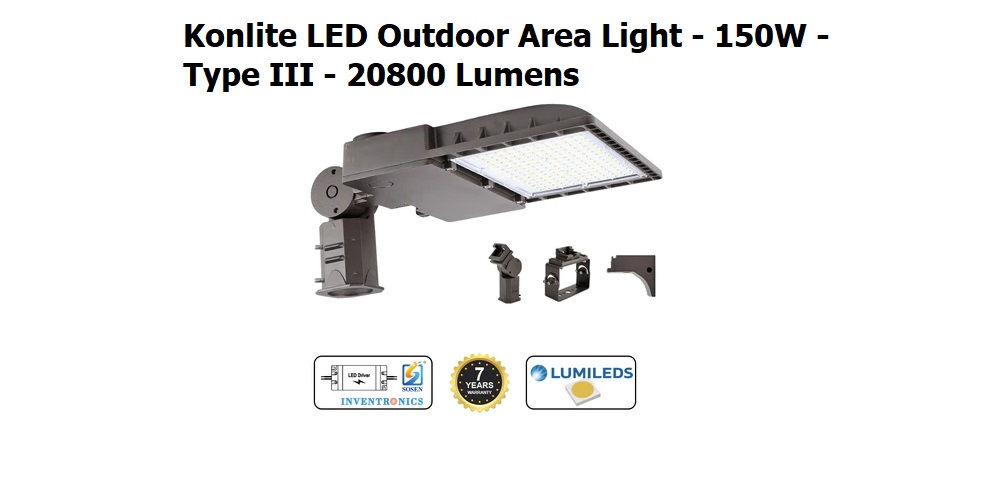The energy efficiency of urban lighting is greatly impacted by the use of LED street lamps, which are characterized by their many benefits, including their high efficiency, energy-saving, safety, long life, fast reaction speed, environmental protection, and excellent color rendering index.
Illuminating the road is crucial to any city’s overall lighting plan. Typical streetlights are still widely utilized. Light from high-pressure sodium lamps can be seen from any direction. Large light loss has many drawbacks, the most significant of which is the excessive energy that is wasted.
LED roadway lighting with an output of 901 milliwatts LEDs often uses only half the power consumption of traditional lamps while producing the same or greater brightness. Rather than breaking down completely, LED lighting gradually loses brightness until it must be replaced.
Below are essential LED street and parking lot lights parameters that you need to know.
Wattage
The wattage of LED street lighting is a significant design consideration. Commonly, the larger the wattage, the more intense the illumination. The height of the pole, the length of the boom, the width of the road, the boom angle, the pole distance, and the distance between the pole and the road all play a role in determining the lux (maintained average illuminance) and maintained average luminance on the ground once the street light is installed.
To determine the correct wattage, use the lighting design software. The distribution of street lights, rather than their wattages, is the primary determinant in assessing the quality of the light they produce. Here are three suggestions for determining the optimal wattage for your needs.
LED Driver
The LED street light’s driver is its most crucial component. After 17 years of use, the LED driver in the street lights has shown to be the most vulnerable component. When it fails, the light either won’t turn on at all, won’t function for a certain period or will flicker. Therefore, picking an LED driver is crucial.
LED Chips
The efficiency of an LED light source depends greatly on the LED chip used to power it. The reliability and luminosity of a ZGSM LED street light are crucial. Further, LED chips are the primary reason why LED streetlights are so powerful. Our split percentages are 30/30 and 50/50. An alternative offers better value in the shape of 3030 LED chips. In terms of energy management contracts, 5050 chips are a viable choice.
Lens/Optics
LED Parking Lot lights – RevolveLED offers a wide range of optical light distributions to achieve greater light uniformity in the roadway, area lighting applications, and architecture.
Color Rendering Index or CRI
The Color Rendering Index (CRI) quantifies the precision with which a light source can reproduce an object’s colors. While a CRI of 100 would be ideal, even 70 is usually enough for use in outdoor LED street lighting. We also provide CRI80, which produces “naturally” or “realistically” colored objects. CRI 80 is the bare minimum for use as interior lighting, while higher values are preferable.
Correlated Color Temperature or CCT
LED light sources can be described by their CCT ratings. The color temperature of a light source describes how yellow, white, or blue it is—the conversion factor between Celsius and Kelvin (CCT) (unit of absolute temperature). Warm is 2700K, neutral is 4000K, and cool is 5700K.
Top of Form
